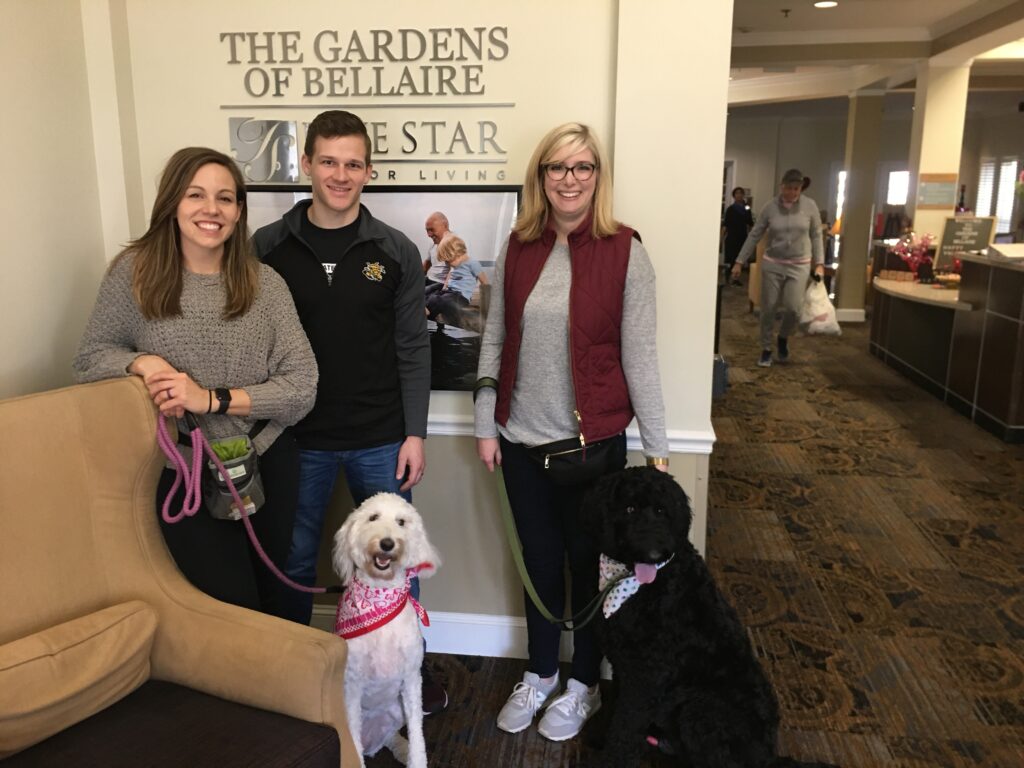- Leash Skills Series #1: Walking a dog
- Leash Skills Series #2: Defining Leash Walking
- Leash Skills Series #3: Leash Training Teamwork
- Leash Skills Series #4: Starting Leash Training
- Leash Skills Series #5: Why a Loose Leash?
- Leash Skills Series #6: Training with Treats – Treats = training tools!
- Leash Skills Series #7: Limitations of “Be a Tree”
- Leash Skills Series #8: Positive Reinforcement for Humans
Positive reinforcement works for all species
Humans learn from positive reinforcement just as well as dogs do. Reinforcers for you might be the joy of a happy dog, a pleasant walk, and maybe pride in the wonderful partnership you’re building.
Professional or self-help?
Hiring a qualified trainer to teach you is helpful. Since training people to train their dogs is my profession, I highly recommend it. The Mannerly Dog’s Virtual Basic Manners Class is filled with leash skills. They are sprinkled among all the Manners skills you want for your dog. We also provide custom leash-training packages and do seminars of leashwork for trainers. However, you can learn leash skills on your own! The challenge is in the commitment; if it’s important to you, you will take each small but necessary step.
Be your dog’s partner
Make it so! Being a partner to your dog as you walk together benefits your relationship. Your own leash skills will also benefit the well-being of every dog you have in the future. Other dogs you come into contact with and dogs you help as a skilled rescue or shelter volunteer will also benefit. Having leash skills will help you handle dogs in shelters, in homes where owners are unable to handle them well, and in your own home when fostering a newly-arrived stressed dog or young, out of control dog. Any rescue organization or shelter would find leash skills an asset in a volunteer.
Benefits of leash skills
Leash skills have great value for dogs and humans. Leash skills help reduce stress, anxiety, and arousal in dogs. They help you provide exercise and mental stimulation in a constructive manner. They open up possibilities of enjoyable visits to public places. A self-controlled dog who chooses to go where his handler goes is priceless to those of us who love hanging out with dogs. The public feels comfortable when dogs and handlers are mannerly.

Leash skills should start early in the training of pets, service and therapy dogs. They comprise a large part of training for any dog that is to work or visit in public places. Leash walking is not a single behavior. It’s a collection of many behaviors including walking with you in a certain position, moving as you move, stopping as you stop. When you get it right, your dog will work as your partner. He’ll do his part as you do yours, creating a team to use leash skills together.
Positive reinforcement for humans and dogs
The communication between a successful human – dog team is similar to that of dance partners. Each adjusts their movements in response to those of the other. They recognize each other’s needs. They let each other know what’s about to happen. The result looks smooth and effortless. It’s beautiful to watch and a joy to experience as a handler. The reinforcement for the human end of the leash is the delight of walking with your dog as a true partner in the process!
This concludes our series on Leash Skills, though we practice it constantly because we love walking in partnership with our dogs!

